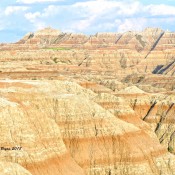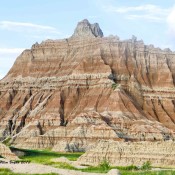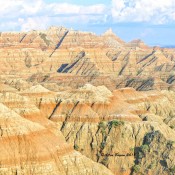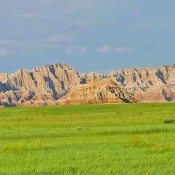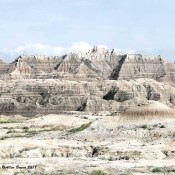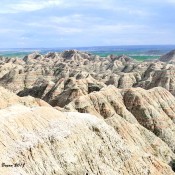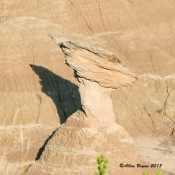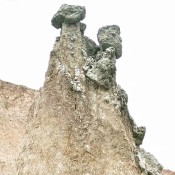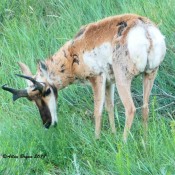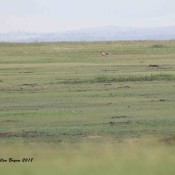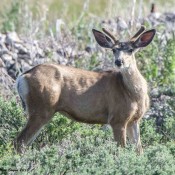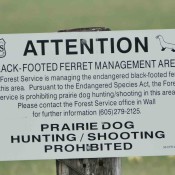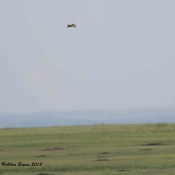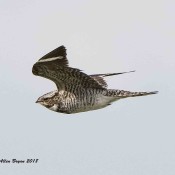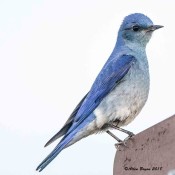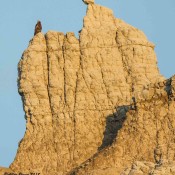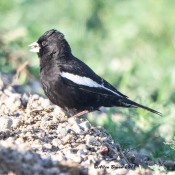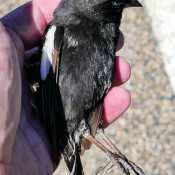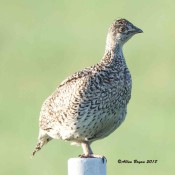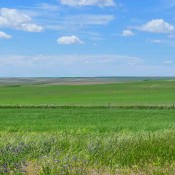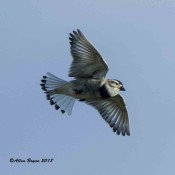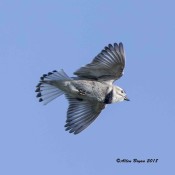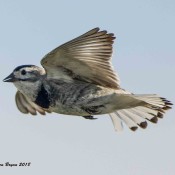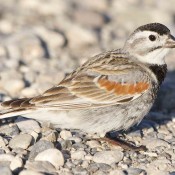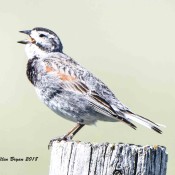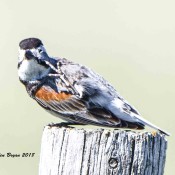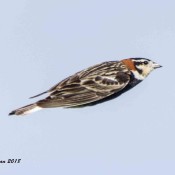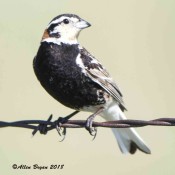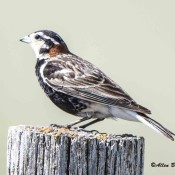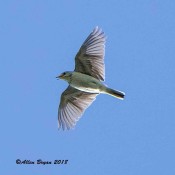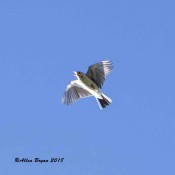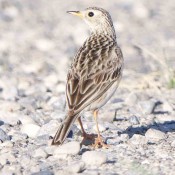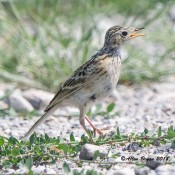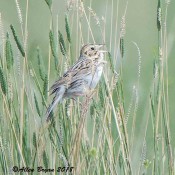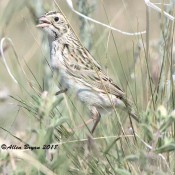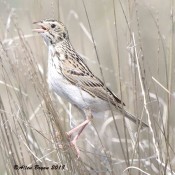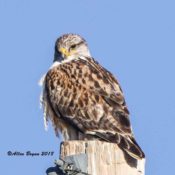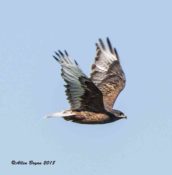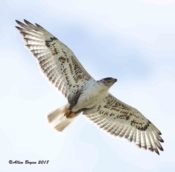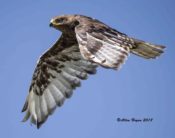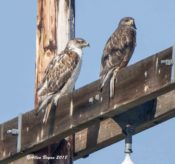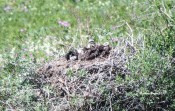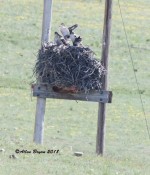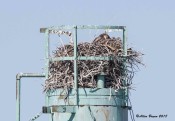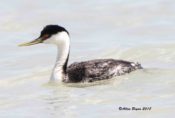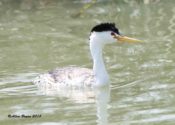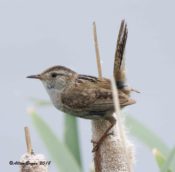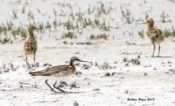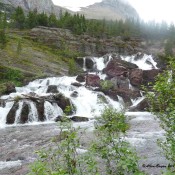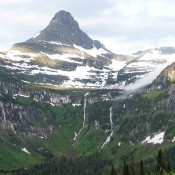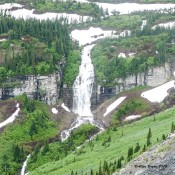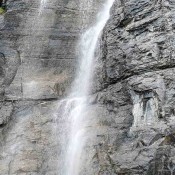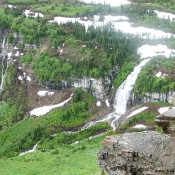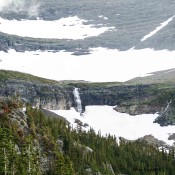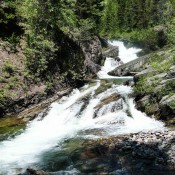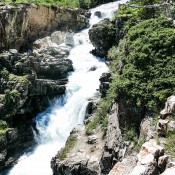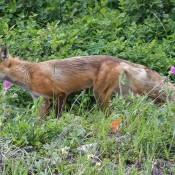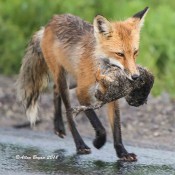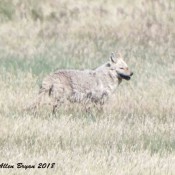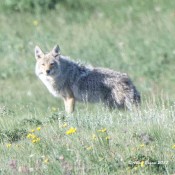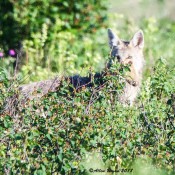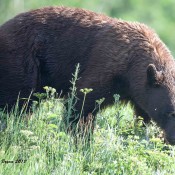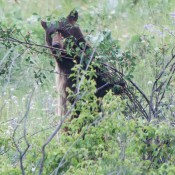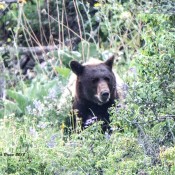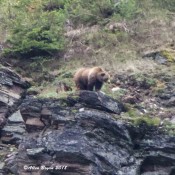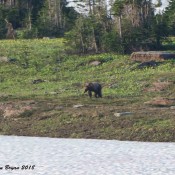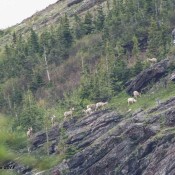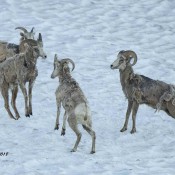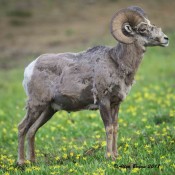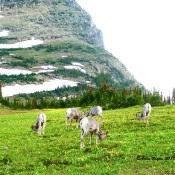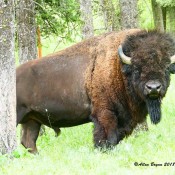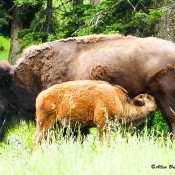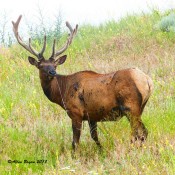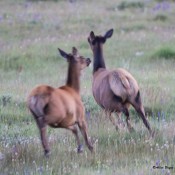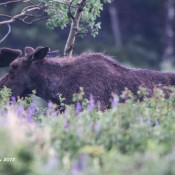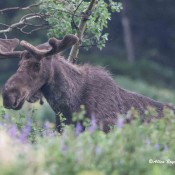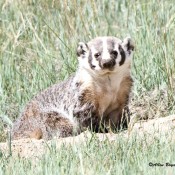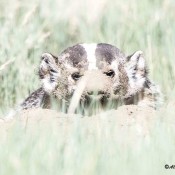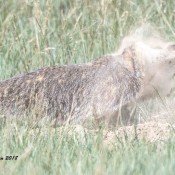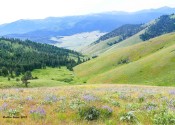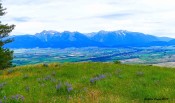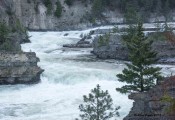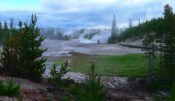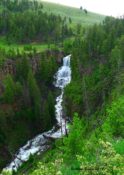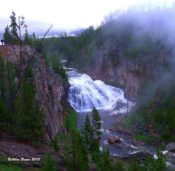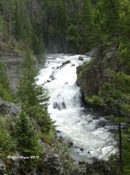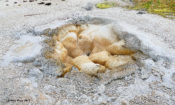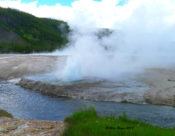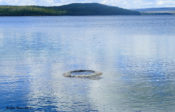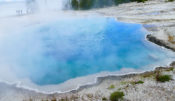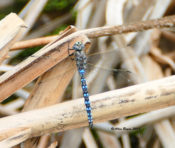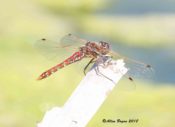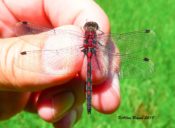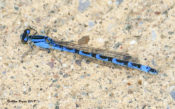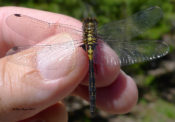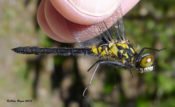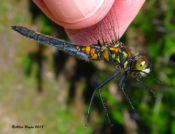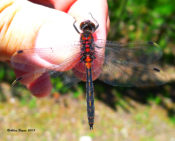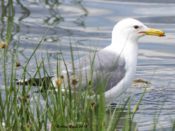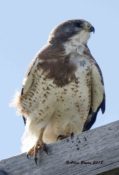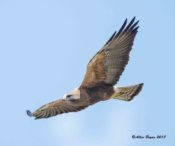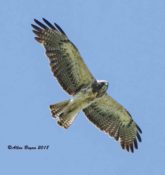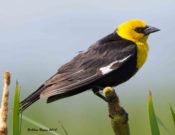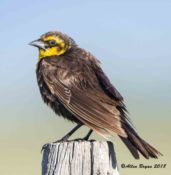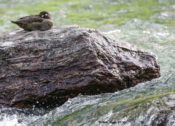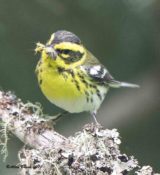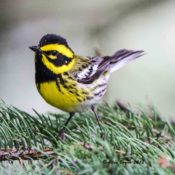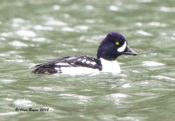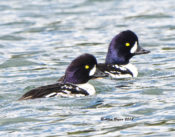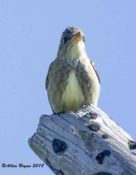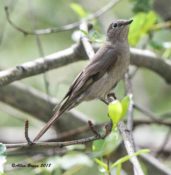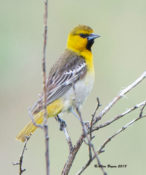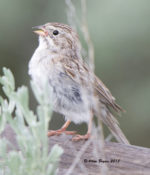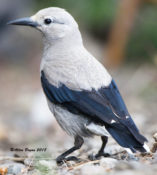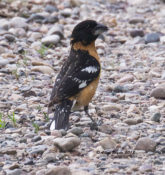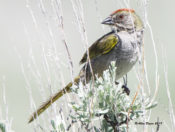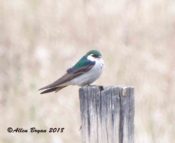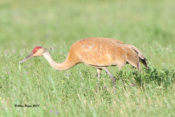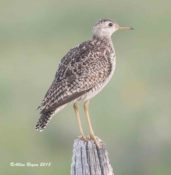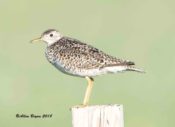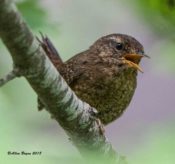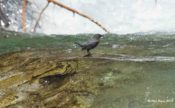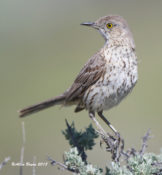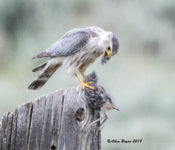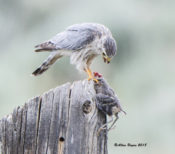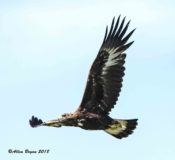For the first time, I drove out to the upper mid-western United States instead of flying. I departed from Richmond in mid-June and returned toward the middle of July. It provided the opportunity to gain a different perspective on our country in many ways, from the immensity of its size, to seeing a myriad of habitat types and to an enhanced awareness of the “perspective divide” our country finds itself in today. This summation is about the landscapes and wildlife that we all should enjoy and appreciate more each day and to the hope that this and future generations will continue to try and preserve it.
My trip took me north from Virginia to Wisconsin through Minnesota and into South Dakota. The weather in these initial days included heavy rain and flooding along the roads I traveled and the rivers I crossed. I finally got clear of the actual rainfall when I got to the Badlands National Park in South Dakota but that didn’t mean that the impact was not being felt in the park with localized ponding and creeks overflowing. With the skies finally clearing the sun provided wonderful illumination for me to enjoy both in the afternoon and toward sunset.
- Badlands National Park
- Badlands National Park
- Badlands National Park
- Badlands National Park
- Badlands National Park
- Badlands National Park
- Badlands National Park
- Badlands National Park
As can be seen the geology and erosion of this unique park provide for some colorful and panoramic views.
Wildlife in the park and surrounding area provides ample opportunity for interested and/or observant parties to be exposed to a variety of birds and mammals.
- Pronghorn Antelope at the Badlands National Park
- Praire Dog town with Coyote reviewing for next meal?
- Mule Deer
- Nearby Black-footed Ferret population management area
- Burrowing Owl hunting over Prairie Dog town
- Common Nighthawk
- Male Mountain Bluebird
- Golden Eagle high above its domain
- Male Lark Bunting
- Even with limited vehicle traffic on tertiary roads many animals meet their demise
- Female Sharp-tailed Grouse in South Dakota
For those of us who are not accustomed to the large open prairies the endless panoramic views and magnitude of “open” and mostly treeless land is unbelievable. And no, I don’t remember seeing a tree in sight from the view below.
- Endless expanse of area in western South Dakota
From South Dakota I made my way to Montana where I spent the majority of my time. It is an immense state with grand vistas, comprised of magnificent mountains, endless prairies and remote areas. The weather was heavenly, from my perspective, with temperatures ranging from 26 to the mid 70’s but my last day did approach 100 in the prairie. My focus was to enjoy some breeding birds on territory which I don’t usually get to hear in song and see in display and to enjoy the many mammal species with their young of the year, when and where possible. The spring colors from the many flowering plants further enhanced the pleasantness of the trip. And yes, I did say spring colors, for much of Montana, at elevation, was still emerging from winter and many butterfly species and definitely odonates appeared delayed in their emergence.
The prairie or grassland bird species I had targeted for appreciating more were Sprague’s Pipit, McCown’s Longspur, Chesnut-collared Longspur and Baird’s Sparrow. I was not to be disappointed as each provided many opportunities for study and photography.
The male McCown’s Longspurs put on elaborate flight displays which displayed their coloration, tail pattern and song.
- McCown’s Longspur in courtship/territorial flight display
- McCown’s Longspur in courtship/territorial flight display
- McCown’s Longspur in courtship/territorial flight display
As the day would proceed, the birds would frequent either a handy fence line and/or land in the adjacent dirt roadways for both song, feedings and territorial skirmishes.
- McCown’s Longspur
- McCown’s Longspur
- McCown’s Longspur
I did not encounter as many Chesnut-collared Longspurs as I did McCown’s. I found the display flights of the McCown’s to be more elaborate but it may have been due to the number of longspurs observed and/or their opportunity to skirmish for territory(?).
- Chestnut-collared Longspur in flight display
- Chestnut-collared Longspur
- Chestnut-collared Longspur
Sprague’s Pipits were initially frustrating to see but not to find. Once I learned that when they perform their song and display flight that you need to look not only up but further up in the sky to locate them. These “flights” would be performed for extended periods of time during the early to mid-morning time period. As the day proceeded I would find them along the road edge and occasionally wandering out into the open for good photographic opportunities.
- Sprague’s Pipit performing song and display flight
- Sprague’s Pipit performing song and display flight
- Sprague’s Pipit
- Sprague’s Pipit
I found Baird’s Sparrow easy to locate by song, but more challenging to observe and photograph. I finally located 3 territorial males and planted my vehicle between the parties and just waited. They finally demonstrated themselves for more easy observation and photographs but I can also share the car, my blind, was like an oven.
- Baird’s Sparrow singing on territory
- Baird’s Sparrow singing on territory
- Baird’s Sparrow singing on territory
Other wildlife commonly observed in association with the grasslands were Ferruginous Hawk, Swainson’s Hawk, Red-tailed Hawk, Vesper Sparrow, Grasshopper Sparrow, Mule Deer, Coyote and Pronghorn Antelope. I had the opportunity to observe my first dark morph Ferruginous Hawks and observed four (4) different nest sites in which they utilized both natural and manmade platforms.
- LIGHT MORPH
- DARK MORPH
- LIGHT MORPH
- DARK MORPH
- LIGHT AND DARK MORPH
During my visit to Montana, I visited Freezeout Lake Wildlife Management Area. This is a good location for breeding grebes, shorebirds and a variety of other birds.
Glacier National Park is a beautiful location to visit should you have the opportunity. I find both the natural beauty of the carved mountain walls, the waterfalls, pristine lakes and wildlife enjoyable. The temperatures are also refreshing when compared to the heat and humidity which are present in the southeast during this same period of time. This also was my earliest visit to Glacier with previous visits having been in late August/early September, and I got to see the summer melt occurring and volume of water running from the mountains was spectacular. (No matter what your perspective on climate change cause, it should be of great concern to All that losing this volume of water, possibly in the near future, which provides life and sustenance across the nation will have adverse impact to everyone and everything it currently serves should global temperatures continue upward unabated.)
- Waterfalls at Glacier National Park, Montana
- Waterfalls at Glacier National Park, Montana
- Waterfalls at Glacier National Park, Montana
- Waterfalls at Glacier National Park, Montana
- Waterfalls at Glacier National Park, Montana
- Waterfalls at Glacier National Park, Montana
- Waterfalls at Glacier National Park, Montana
- Waterfalls at Glacier National Park, Montana
Mammals were on display at Glacier and the other sites visited during the trip. Many supporting the new young of the year and others just enjoying the new plant growth or the natural predator/prey cycle.
- Red Fox on the move
- Red Fox with prey
- Coyote on the hunt
- Coyote on the hunt
- Coyote with prey
- Black Bear searching for food
- Black Bear searching for food
- Black Bear searching for food
- Grizzly Bear
- Grizzly Bear
- Big Horn Sheep grazing
- Young male Bighorn Sheep pretend sparing
- Bighorn Sheep in molt
- Bighorn Sheep grazing
- Large bull buffalo
- Cow buffalo with young
- Large bull elk
- Elk on the move
- Bull Moose in early light
- Bull Moose in early light
- Badger keeping on eye on me
- Badgers don’t mind a little dirt on the face
- Dusting after performing the house cleaning
I took several days and traveled through northwestern and southwestern Montana and then briefly over to Yellowstone National Park and Grand Teton National Park. The natural beauty and unique fauna, geology and ecosystems of this entire area can be overwhelming. Below are some images from the National Bison Range and Kootenai Falls.
My images from Yellowstone National Park were principally of the geyser basins which from a geological standpoint were not like anything I had to experienced before. The constant generation and movement of the water and steam, the colors of the rock, water and algae, the smell of sulphur and the fogging of camera lens, glasses, binoculars from the steam were all constant reminders of the activity and thermal presence below your feet.
- Yellowstone National Park
- Yellowstone National Park
- Yellowstone National Park
- Yellowstone National Park
- Yellowstone National Park
- Yellowstone National Park
- Yellowstone National Park
- Yellowstone National Park
- Yellowstone National Park
- Yellowstone National Park
- Yellowstone National Park
Odonates proved to be challenging on this trip as I think I was “early” for their emergence in many areas(?). As the visit progressed a few species started demonstrating themselves.
- California Darner from Montana
- Alkali Bluet from Montana
- Belted Whiteface, Montana
- Belted Whiteface, Montana
- Belted Whiteface, Montana
- Belted Whiteface, Montana
Some additional miscellaneous birds photographed are as follows:
- California Gull, Freezeout WMA, Montana
- California Gull, Freezeout WMA, Montana
- Swainson’s Hawk in Montana (light morph)
- Swainson’s Hawk in Montana (intermediate morph)
- Swainson’s Hawk in Montana (light morph)
- Yellow-headed Blackbird- male
- Yellow-headed Blackbird- female
- Harlequin Duck in Glacier National Park
- Townsend’s Warbler- female
- Townsend’s Warbler- male
- Barrow’s Goldeneye in Glacier National Park
- Barrow’s Goldeneye in Yellowstone National Park
- Olive-sided Flycatcher in Glacier National Park
- Townsend’s Solitaire in Montana
- Bullock’s Oriole in Montana
- Brewer’s Sparrow in Montana
- Clark’s Nutcracker in Yellowstone National Park
- Black-headed Grosbeak in Grand Teton National Park
- Green-tailed Towhee in Grand Teton National Park
- Violet-green Swallow in Montana
- Sandhill Crane in Montana
- Upland Sandpiper in Montana
- Upland Sandpiper in South Dakota
- Pacific Wren in Glacier National Park
- American Dipper in Glacier National Park
- Sage Thrasher in Montana
- Merlin (Prairie) in Montana with prey
- Merlin (Prairie) in Montana with prey
- Golden Eagle in Montana
